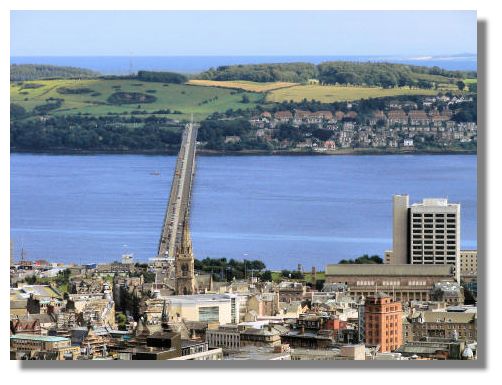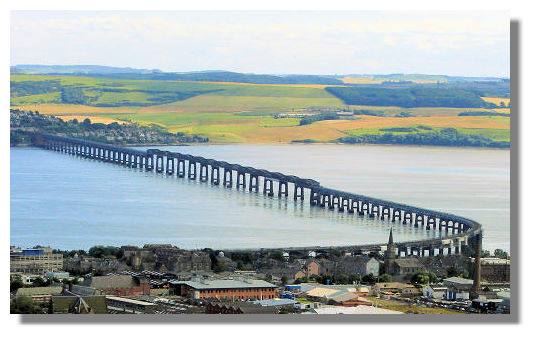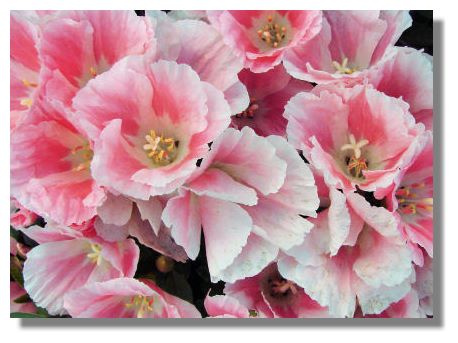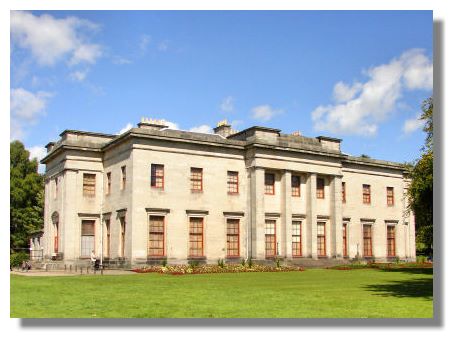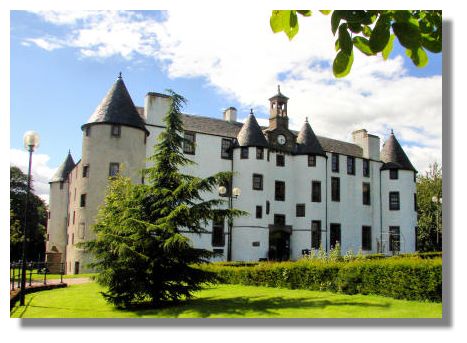Each week the Rampant Scotland Newsletter includes a number of photographs which illustrate the weather and the seasons, plus the flora and fauna of the current week around Scotland. This separate "colour supplement" displays some more pictures, in a larger format. Here is this week's crop of Scottish views!
This is the view from the top of Dundee Law (570 feet above sea level) of the centre of Dundee, looking south to the Tay Road Bridge and Fife on the other side of the river. The road bridge was built in 1966 at a cost of £6 million, avoiding a 50 mile journey between Dundee and Newport on Tay on the other side (or the ferry that was made redundant by the bridge). 1.4 miles long, the Tay Road Bridge carries over 8 million vehicles a year.
The original Tay Rail Bridge, slightly up-river from the road crossing, was completed in early 1878. At the time, it was among the longest in the world, but during a violent storm on the evening of 28 December 1879, the centre section of the bridge collapsed, taking with it a train that was running on its single track. More than 75 lives were lost. The replacement seen here was opened on 13 July 1887. Even at high tide, the supports for the old bridge can be seen near the present structure - a constant reminder of the earlier tragedy.
Clarkia amoena (or "Farewell to Spring" or Godetia amoena) are one of my favourites - they come in so many bright and cheerful colours and these annual bedding plants flower for a long period - sometimes until the first frosts arrive. Derived from plants which are native to western North America, (from British Columbia south to the San Francisco Bay area), they are now in gardens across Scotland and the rest of the UK every summer.
Camperdown is named after a famous naval victory in 1797 during the French Revolutionary Wars, when the British fleet under Scots-born Admiral Adam Duncan defeated a Dutch fleet which thwarted a planned invasion of central Scotland by 50,000 Dutch troops. This victory was considered one of the most significant actions in naval history and a grateful nation made him 1st Viscount Duncan of Camperdown, (with which came the lands now known as Camperdown Park, Dundee) and the freedom of that city. It was his son (raised to an Earl) built Camperdown House in the estate. The grounds are now a public park.
Mesembryanthemum (also known as Dorotheanthus or Livingston Daisy) produce a carpet of flowers from early summer to early autumn. Originating in South Africa, they need a lot of sun as the flowers don't open in the shade or when the weather is dull. Despite Scotland's somewhat unpredictable weather in that regard, they are popular plants here.
The original Dudhope Castle goes back to the late 13th century and was built by the Scrymageour family. The original building was replaced around 1460 and then extended to its present L-plan structure in 1580. The Scrymageour family sold the castle in 1668 to John Graham of Claverhouse (also known as "Bonnie Dundee" or "Bloody Clavers" depending on religious persuasion). From 1796 to 1879 the building was used as a military barracks. Currently it houses the University of Abertay's Dundee Business School.
If you want to look back at earlier editions of this Colour Supplement, there is an Index Page
